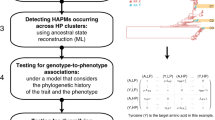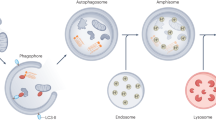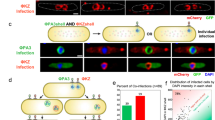Abstract
IN a recent article1, I have argued that viruses and what I call plasmagenes2 are derived from cell proteins. On my view, these undifferentiated proteins may come to acquire the properties either of infection or, alternatively, of inheritance, by processes of adaptation which I attempted to describe. I also represented these processes in a diagram (Fig. 3) in which arrows showed the conceivable and, to me, probable directions of evolutionary change.
This is a preview of subscription content, access via your institution
Access options
Subscribe to this journal
Receive 51 print issues and online access
$199.00 per year
only $3.90 per issue
Buy this article
- Purchase on SpringerLink
- Instant access to full article PDF
Prices may be subject to local taxes which are calculated during checkout
Similar content being viewed by others
References
Nature, 154, 164 (1944).
"The Evolution of Genetic Systems" (Cambridge, 1939).
Carson, G. P., Howard, H. W., Markham, Roy, and Smith, Kenneth M., Nature, 154, 334 (1944).
Author information
Authors and Affiliations
Rights and permissions
About this article
Cite this article
DARLINGTON, C. Paracrinkle Virus and Inheritance. Nature 154, 489 (1944). https://doi.org/10.1038/154489a0
Issue date:
DOI: https://doi.org/10.1038/154489a0



